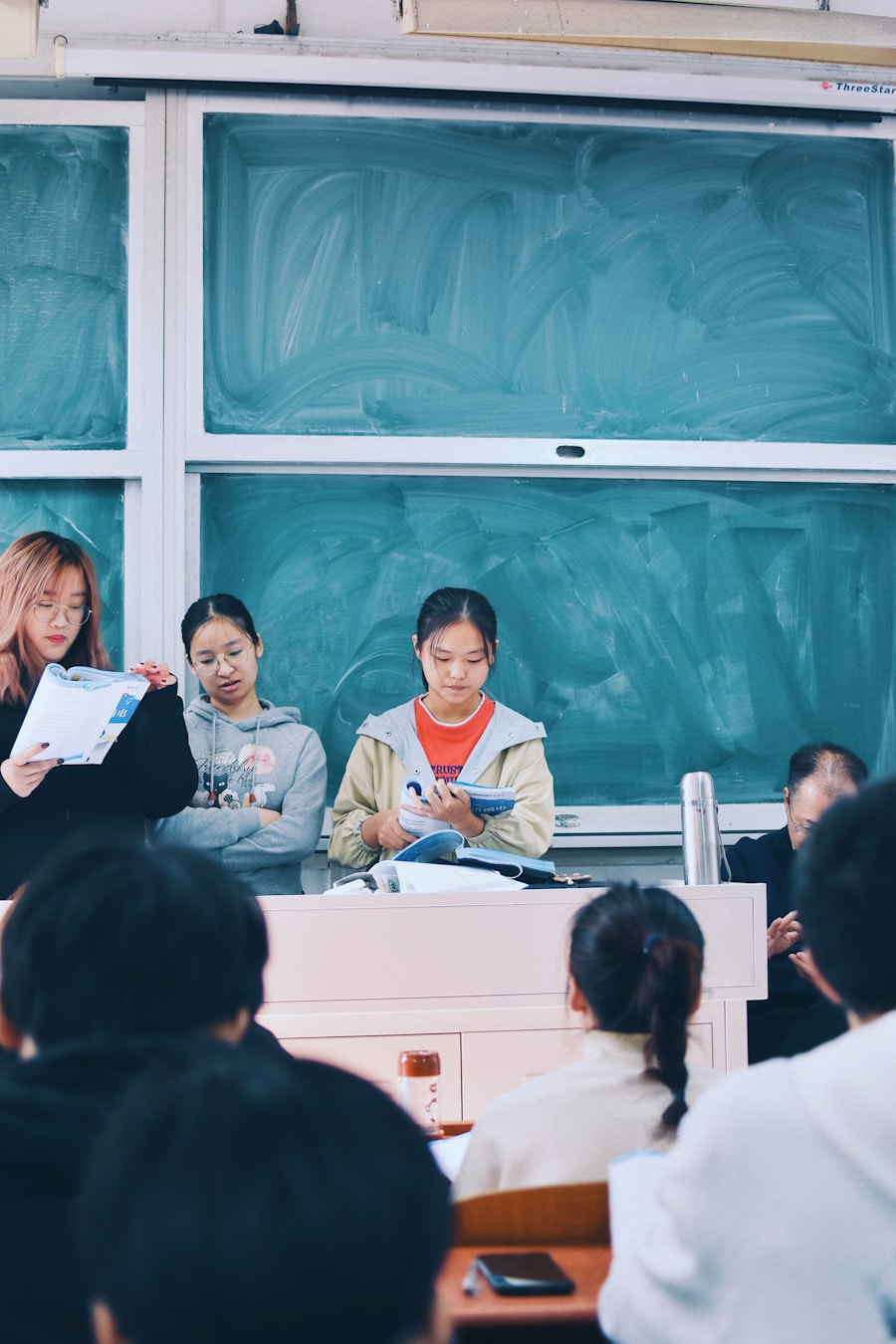Globalization is a multifaceted phenomenon that has transformed the way nations interact, communicate, and collaborate across various sectors, including education. It refers to the increasing interconnectedness of economies, cultures, and populations driven by trade, investment, technology, and the movement of people. In the realm of education, globalization has fostered international educational cooperation, enabling institutions to share knowledge, resources, and best practices.
This collaboration is not merely a trend; it represents a fundamental shift in how education is perceived and delivered worldwide. As countries strive to prepare their citizens for a globalized world, the importance of international educational cooperation becomes increasingly evident. International educational cooperation encompasses a wide range of activities, including student and faculty exchanges, joint research initiatives, and collaborative curriculum development.
These efforts aim to enhance educational quality and accessibility while promoting mutual understanding among diverse cultures. The rise of digital technology has further accelerated this process, allowing for real-time communication and collaboration across borders. As a result, educational institutions are no longer isolated entities; they are part of a global network that influences teaching methodologies, learning outcomes, and educational policies.
This interconnectedness presents both opportunities and challenges that require careful navigation by educators, policymakers, and students alike.
Key Takeaways
- Globalization has led to increased international educational cooperation, allowing for the exchange of knowledge and resources among different countries.
- The impact of globalization on educational systems has resulted in the adoption of new teaching methods, technologies, and curriculum to meet the demands of a globalized world.
- Globalization plays a crucial role in promoting cross-cultural understanding by facilitating the exchange of ideas, values, and traditions among students and educators from different cultural backgrounds.
- International educational cooperation presents both challenges, such as language barriers and differing educational standards, and opportunities, such as the sharing of best practices and resources.
- Successful international educational cooperation initiatives include joint research projects, student exchange programs, and collaborative curriculum development, all of which contribute to a more interconnected and globally aware educational landscape.
- The future of globalization and international educational cooperation will likely involve further integration of digital technologies, increased emphasis on global citizenship education, and the development of more inclusive and equitable educational partnerships.
The Impact of Globalization on Educational Systems
The impact of globalization on educational systems is profound and multifaceted. One of the most significant changes has been the shift towards a more standardized approach to education. As countries seek to compete in a global economy, there is an increasing emphasis on developing skills that are universally recognized and valued.
This has led to the adoption of international benchmarks and assessments, such as the Programme for International Student Assessment (PISA), which evaluates the educational performance of students across different countries. Such assessments not only provide insights into the effectiveness of national education systems but also encourage countries to adopt best practices from one another. Moreover, globalization has facilitated the exchange of educational resources and expertise.
Institutions in developing countries can now access high-quality teaching materials and training programs from more developed nations. For instance, online platforms like Coursera and edX offer courses from prestigious universities that can be accessed by students worldwide, regardless of their geographical location. This democratization of knowledge allows learners from diverse backgrounds to benefit from world-class education, thereby narrowing the gap between different educational systems.
However, this also raises questions about equity and access, as not all students have the same opportunities to take advantage of these resources.
The Role of Globalization in Promoting Cross-Cultural Understanding

Globalization plays a crucial role in fostering cross-cultural understanding among students from different backgrounds. By participating in international educational programs, students are exposed to diverse perspectives and ways of thinking that challenge their preconceived notions. For example, study abroad programs allow students to immerse themselves in different cultures, enhancing their cultural competence and empathy.
This exposure is essential in an increasingly interconnected world where collaboration across cultures is often necessary for success in both personal and professional spheres. Furthermore, international educational cooperation encourages dialogue and collaboration among students from various countries. Joint projects and collaborative research initiatives enable students to work together towards common goals while appreciating each other’s cultural differences.
For instance, initiatives like the Erasmus+ program in Europe promote student mobility and intercultural exchange among participating countries. Such experiences not only enrich students’ academic journeys but also cultivate a sense of global citizenship. As students learn to navigate cultural differences and work collaboratively with peers from diverse backgrounds, they develop essential skills that are highly valued in today’s global job market.
Challenges and Opportunities in International Educational Cooperation
While globalization presents numerous opportunities for international educational cooperation, it also poses significant challenges that must be addressed. One major challenge is the disparity in educational quality and resources between countries. While some institutions have access to cutting-edge technology and highly qualified faculty, others struggle with inadequate infrastructure and limited funding.
This inequality can hinder effective collaboration and create barriers to meaningful exchanges between institutions. For instance, a university in a developing country may find it difficult to engage in joint research projects with a well-funded institution in a developed nation due to differences in resources and capabilities. Another challenge lies in the potential for cultural homogenization.
As global educational standards become more prevalent, there is a risk that local cultures and traditions may be overshadowed by dominant educational paradigms. This can lead to a loss of cultural identity and diversity within educational systems.
Encouraging localized adaptations of global educational frameworks can help mitigate this risk while still promoting international cooperation.
Examples of Successful International Educational Cooperation Initiatives
Numerous successful initiatives exemplify the potential of international educational cooperation to enhance learning experiences and foster global understanding. One notable example is the Fulbright Program, which facilitates academic exchanges between the United States and over 160 countries worldwide. This program allows students, scholars, and professionals to study, teach, or conduct research abroad while promoting mutual understanding between nations.
The Fulbright Program has produced thousands of alumni who have gone on to become leaders in their fields, contributing to cross-cultural dialogue and collaboration. Another successful initiative is the United Nations Educational, Scientific and Cultural Organization (UNESCO) Global Education Monitoring Report (GEMR). This initiative aims to monitor progress towards achieving inclusive and equitable quality education for all by 2030 as part of the Sustainable Development Goals (SDGs).
By providing data-driven insights into global education trends, GEMR fosters collaboration among countries to share best practices and address common challenges in education. The report serves as a valuable resource for policymakers seeking to improve their national education systems while aligning with global standards.
The Future of Globalization and International Educational Cooperation

Virtual Exchange and Collaboration
As technology continues to evolve, it will play an even more critical role in facilitating international collaboration among educational institutions. Virtual exchange programs and online collaborative projects will become more commonplace, allowing students from different parts of the world to connect without the constraints of physical travel.
Sustainability in International Education
There will be a growing emphasis on sustainability within international educational cooperation. As global challenges such as climate change become more pressing, educational institutions will need to collaborate on developing innovative solutions that address these issues. Programs focused on environmental education and sustainability will likely gain prominence as countries recognize the importance of preparing future generations to tackle these challenges collectively.
Embracing Opportunities and Challenges
In conclusion, globalization has fundamentally transformed international educational cooperation by fostering cross-cultural understanding and facilitating knowledge exchange among diverse populations.
As we move forward into an increasingly interconnected future, it is essential for educators and policymakers to embrace these opportunities while remaining mindful of the need for equity and cultural preservation within global education systems.
Globalization plays a crucial role in shaping international educational cooperation by facilitating the exchange of ideas, resources, and knowledge across borders. In a related article,






















+ There are no comments
Add yours